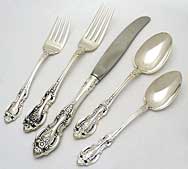Knife Basket
No example of this needle case has been found to date and it is unknown whether it was actually produced. If you have this needle
case in your possession or know of someone who has it, please contact us so that photographs of it can be
obtained and added to the this website.
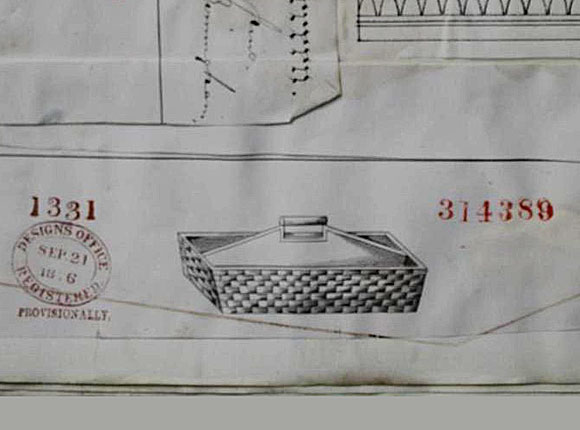
Design Representation
Design Details
Needle Case Type: |
Figural |
Patent/Registered to: |
Frank J. Kendrick - Birmingham |
Patent/Design Representation #: |
Ornamental Class 1: Metal: #314389 (Provisional design #1331 registered September 21, 1876) |
Patent/Design Registration Date: |
September 20, 1877 |
Location of Patent/Design Registration: |
The National Archives (TNA) - Kew, UK |
Reference #:
|
TNA Representation - BT 43/42/314389
TNA Register - BT 44/4/314389 |
Dimensions: |
Unknown |
Material: |
Unknown |
Name Variations: |
Unknown |
Other Variations: |
Unknown |
Facts
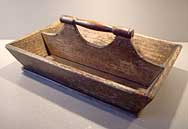
A knife basket is a box or tray used to carry or store knives and other cutlery. A separate box is needed in order to prevent cooks and
other household members from accidentally cutting themselves when handling these sharp eating utensils. Several different models were
available in the19th century. The most common was a simple wooden or wicker tray with a center board and handle that separated the container
into two halves. A more sophisticated version, often called a knife box, was also made of wood, however it contained elaborate exterior
decoration and the interior compartment allowed the knives to be stored vertically.
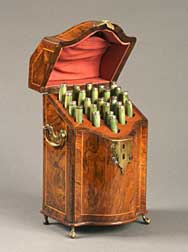
History

The knife is one of man’s most important tools. The earliest ones were made of stone, flint or obsidian attached to a wooden sheath, and
shaped or sharpened by chipping off small pieces of rock. These were used for hunting and food preparation as well as cutting animal skins to
form basic garments for warmth during cold weather. During the Bronze Age metallurgy developed stronger more durable items leading to
double-bladed knives, swords, spears and axes being made of steel by the Medieval period. Sharp, pointed knives were often used for eating
since the tip could be used to pierce pieces of food and the bladed edges could cut into it. However, in the mid-17th century the French
Cardinal Richelieu convinced King Louis XIV to ban the use of double-bladed knives because he disliked how they were used to scope up food from the
table and pick at or clean the teeth. As a result, the blunt tipped single blade knife became the standard on most European tables.
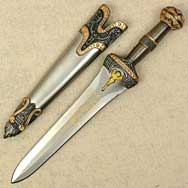
Miscellaneous
Cutlery is a term used to describe the knives, forks, and spoons used for eating or serving food, whereas a “cutler” is the person who makes or
sells cutlery. Although humans have always had some type of eating utensils, ones made of metal and shaped like the knives, forks and spoons
we see today didn’t become common until the17th century. At that time the towns of Sheffield and Birmingham in the UK were known as centers
for cutlery production. Although elaborate tableware made of silver was popular with the upper class, during the Victorian period innovations
in steelmaking lead to less expensive steel and iron cutlery which did not tarnish like silver did. Stainless steel was invented in the 1920s
and most tableware is made of this material today.
